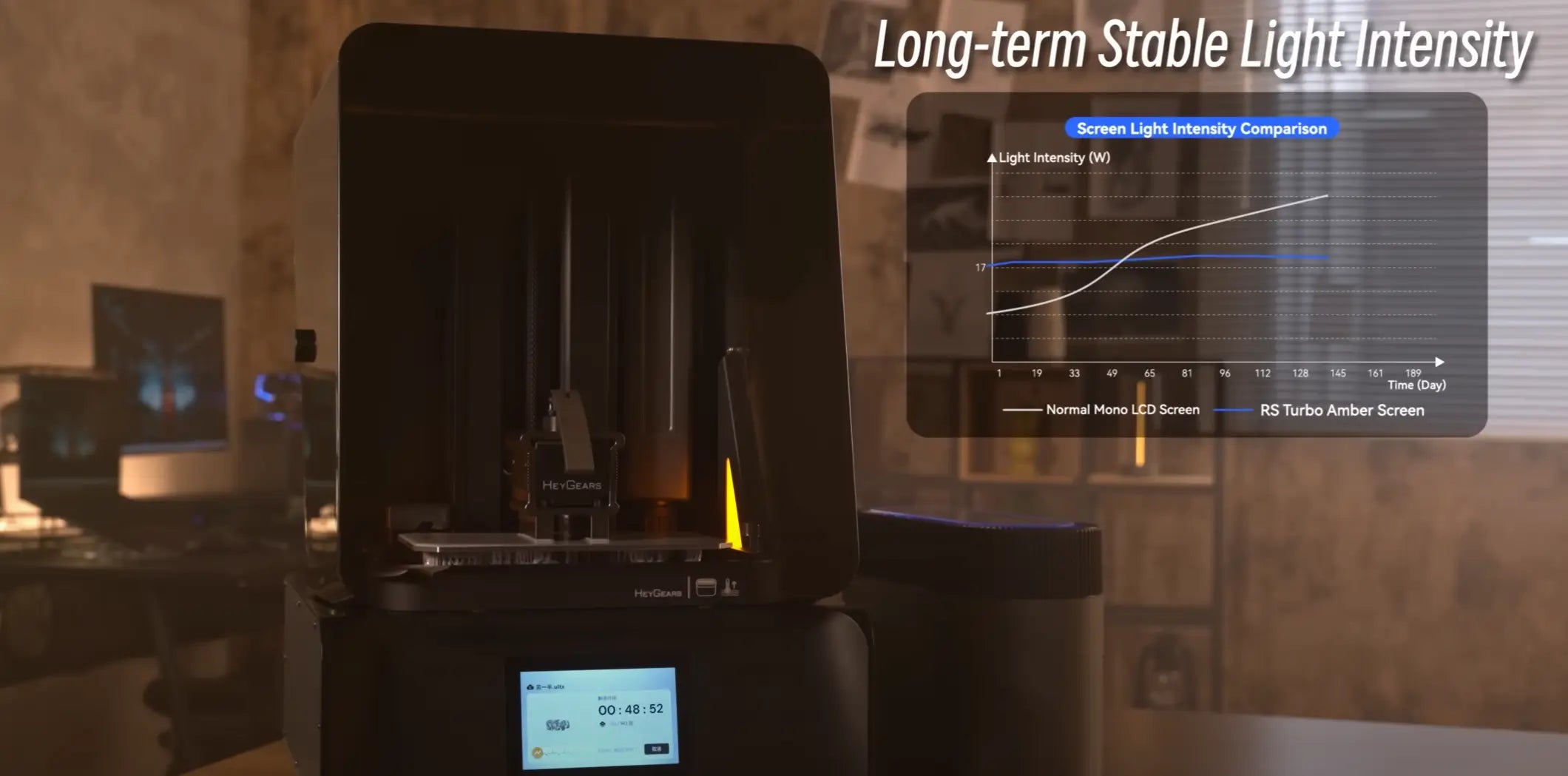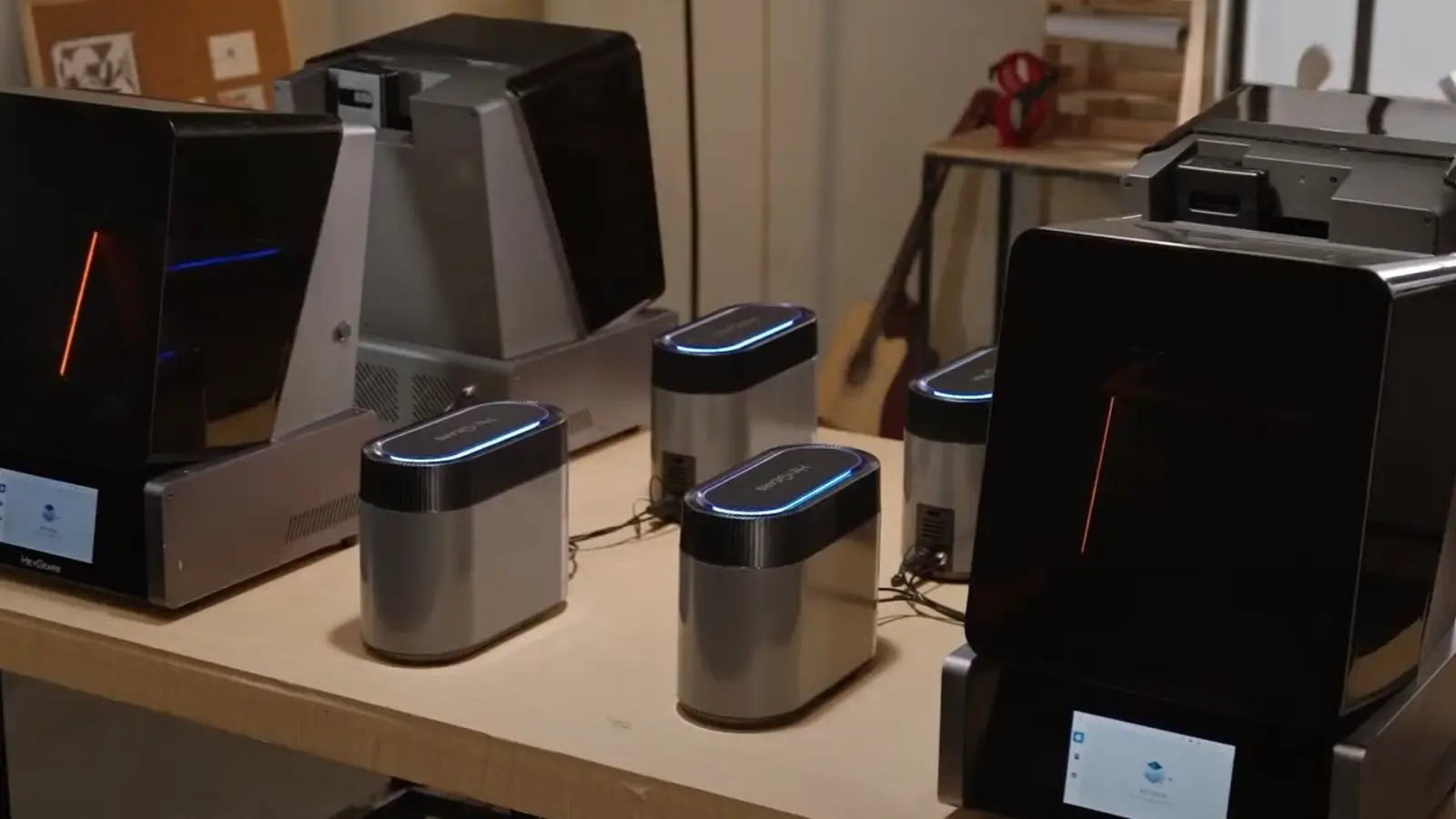It can be difficult to choose the best 3D printer for the first time. Both resin and filament printers are preferred in these alternatives. Every printer uses a certain print technology, and has its advantages associated with the limitations.
Resin printers function with liquid resin and light, producing precise and high quality prints. Filament printers create objects in layers from spools of plastic melted by heat. In this post, we're going to compare resin vs filament 3D printing to help you decide which type of 3D printer is ideal for your needs.
What is Filament 3D Printing?
Filament 3D printing is also called the FDM or Fused Deposition Modeling. It employs plastic filament that is melted through a heated nozzle.
The molten plastics are stacked on top of each other at a time to create a solid object. It is a method that is well-known for being inexpensive and simple. It's beginner-friendly and is good enough for functional parts and prototypes.

What is Resin 3D Printing?
Resin 3D printers use liquid resin that turns solid after being cured by ultraviolet (UV) light. The resin is cured layer by layer using a light source.
This is a process that results in very detailed (smooth) prints. It is frequently used for miniatures, dental models and jewelry. Although it is precise, resin printing is messy, and it also involves additional steps like washing and curing.

The Difference Between Resin and Filament 3D Printers
Resin and filament 3D printers use different technology, which determines print quality, print speed, cost, and safety. To make the correct choice based on your specific needs, you'll want to know these differences.
|
Feature |
Resin 3D Printer |
Filament 3D Printer (FDM) |
|
Print Quality |
Extremely high detail and smooth finishes |
Moderate detail with visible layer lines |
|
Best For |
molding parts |
Prototypes, mechanical parts, and larger items |
|
Print Speed |
Slower due to curing time |
FDM has travel time and is usually slower |
|
Build Volume |
Smaller print area |
Larger build volume |
|
Material Cost |
More expensive resins |
Generally cheaper filament options |
|
Material Variety |
Resin printing also offers rubber-like flexible materials, though with fewer options than FDM |
A wide variety, like PLA, ABS, PETG, TPU |
|
Post-Processing |
Requires washing and UV curing |
Minimal often just supports removal |
|
Ease of Use |
More complex setup and maintenance |
Beginner-friendly and widely supported |
|
Safety & Cleanup |
Requires gloves, masks, and proper ventilation |
Safer but needs ventilation for fumes |
|
Maintenance |
Needs resin handling, tank cleaning |
Easier to maintain, fewer messy materials |
Print Quality & Detail
Resin-based printers cure a liquid photopolymer with UV light, resulting in ultra-smooth surfaces and excellent detail. Filament printers heat and melt plastic, often leaving obvious lines and reducing finer details.
Build Volume & Scale
Filament printers generally come with bigger build areas, perfect for making substantial, functional pieces. The print area on resin printers is smaller simply because of the size of the vat, so this type of printer is best for smaller, highly detailed items.
Speed & Efficiency
Resin printing cures entire layers at once using light, making it faster for detailed prints. Filament printers deposit plastic line by line, which can be slower for complex models.
Material Cost & Variety
The costs and types of filament materials, such as PLA, ABS, and PETG, can vary greatly. Resin is typically more expensive per print, as it has fewer flexible or engineering-grade resins available.
Post-Processing & Cleanup
Resin prints need cleaning, draining excess resin, and a curing process using UV. Many filament prints only require support removal and optional light sanding.
Safety & Environmental Concerns
Resin printing deals with toxic liquids and noxious fumes, which require gloves and ventilation. Filament printing releases ultrafine particles and VOCs when heated, but is typically safer.

Which One Should You Choose?
The decision between a resin and a filament 3D printer for you will come down to special requirements, your level of experience, and the type of projects you want to use it for.
If you are concentrating on high-detailed models like miniatures, dental casts or jewelry, resin printers are a better option for you because of their high resolution and smooth finish. But they introduce emphasis on more post processing and safety aspects.
In contrast, filament printers are perfect for beginners, hobbyists, and anyone who requires functional parts. They are easier to work with, cheaper over time and compatible with a wider range of materials. Resin printers thrive with detail whereas filament printers thrive with the range of possibilities and utility.
Consider how much time, money, and effort you are willing to spend on setup and maintenance. A filament printer might be best if you're getting started or need prints for general use. For high-quality and detailed models, resin printing is certainly worth the extra work.
Things You Need to Know Before Buying
Before you purchase a 3D printer, consider a few important factors that affect its overall performance, affordability, and security. Here's what you need to know to pick the right printer to fit your needs.
Purpose and Application
Identify how you'll use the 3D printer. For intricate models like miniatures or jewelry, you can't beat resin printer. If you need larger, functioning parts or prototypes, a filament printer is better.
Print Volume and Speed
Think about the size of the models you expect to print. Bigger build volumes mean bigger prints, or more items at once. But larger prints will take longer to print, requiring significantly more room.
Material Compatibility
Different printers support various materials. PLA, ABS, or PETG are the most common materials for filament printers. Resin printers use photopolymer resins. Make sure the printer you select is compatible with the type of materials available for your projects.
Post-Processing Requirements
Resin prints require additional steps like washing with isopropyl alcohol and UV curing. Filament prints often need minimal post-processing, such as removing supports. Consider the time and effort you're willing to invest in post-processing.
Safety and Workspace Setup
Resin printing involves handling chemicals and requires a well-ventilated area. Filament printing is generally safer but may emit fumes. Ensure your workspace is equipped for the safety requirements of the chosen printer.
Maintenance and Running Costs
Factor in the ongoing costs of materials and maintenance. Resin printers may have higher material costs and require more maintenance, such as replacing FEP films. Filament printers typically have lower material costs and simpler maintenance.
Printer Reliability and Support
Research the manufacturer's reputation for reliability and customer support. Look for printers with strong community support, available spare parts, and responsive service teams. This ensures assistance when issues arise.
Conclusion
Choosing between resin vs filament 3D printers depends on your needs, budget, and experience. Resin printers deliver high detail but require extra care, while filament printers offer versatility and ease of use.
Understanding these differences helps you pick the best printer for your projects. Make an informed choice and enjoy the exciting world of 3D printing!
Related articles:



Share:
How to Use a 3D Printer: A Beginner's Guide
3D Printing Materials: Guide